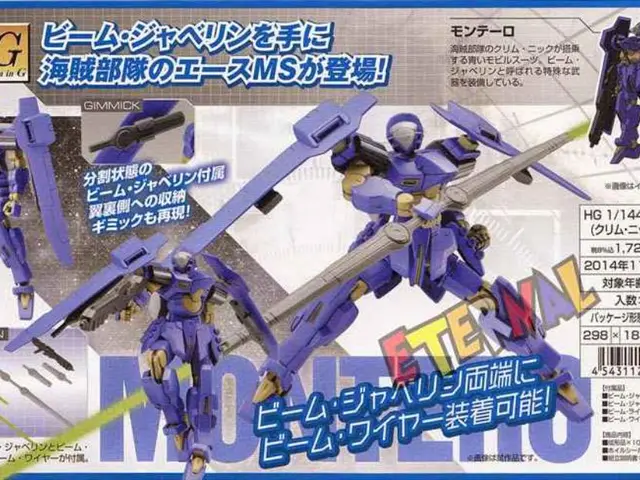A Grumble About the Green Apron: Starbucks Sparks Unrest with New Dress Code
Staunching employee dissatisfaction through cultivating a stricter dress code at Starbucks.
Starbucks has stirred up controversy among its baristas with a fresh clothing standard. As of this week, stringent guidelines for attire have surfaced in company-operated and licensed Starbucks stores across the United States and Canada. Baristas are now required to don black shirts, with shades like gray, brown, or white no longer being accepted. The only exception to this rule is pants, which may still be khaki, black, or blue. The establishment's iconic green apron featuring the Starbucks logo remains a staple, acting as the outfit's centerpiece. Prior to this change, a diverse range of dark colors and patterned shirts were permitted.
This new dress code has instigated considerable protests: Over a thousand Starbucks baristas in 75 U.S. locations reportedly went on strike Sunday, according to Starbucks Workers United, a union that represents around 570 of the company's approximately 10,000 U.S. stores. The union has a critical outlook on the changes, declaring that a preliminary agreement on the dress code was already in place and that these most recent guidelines are inconsistent with the current collective bargaining negotiations.
"Familiarity" in the Forefront
Numerous baristas argue that being compelled to buy new wardrobe items is unjust, especially when considering their low wages and uncertain job security. Furthermore, despite the fact that clothing bearing the company logo that is no longer allowed to be worn is still being peddled on Starbucks' internal website, some employees have spoken out against this practice. "If customers care about the color of our clothes while waiting for their lattes, we have larger problems," stated a Starbucks employee to the Associated Press.
Starbucks claims that after implementing the change, each employee will be furnished with two complimentary black T-shirts. The modification is allegedly designed to highlight the green aprons and generate a consistent, inviting ambiance in stores. The simplified dress code seeks to offer customers a sense of familiarity, regardless of the store they visit in North America, the company reported.
In a declaration on Wednesday, Starbucks noted that the walkouts had only caused minor disruptions to operations. According to the company, over 99% of its U.S. stores continue to serve customers. Starbucks also stated that less than 1% of their employees participated in the walkouts, and some stores were shuttered for under an hour.
Starbucks' revenue has dipped in both domestic and international markets. In the United States, which remains the company's most significant market, same-store sales have declined for the fifth consecutive quarter. Many customers claim that Starbucks' prices are exorbitant, and as a result, they are less inclined to fork out $6 or more for a coffee. This reluctance has led to a decrease in occasional customers, particularly during peak morning hours, resulting in extensive wait times and a substantial number of mobile orders being abandoned.
Sources: ntv.de, sba
- Starbucks
- Employees
Enrichment Data:
The recent introduction of a stricter dress code at Starbucks has provoked debate among employees, culminating in protests in various locations. The primary reasons for the discord and its impact on operations are detailed below:
Reasons for Employee Discord
- Limited Options: The new rule demands that employees wear plain black shirts, with only khaki, black, or blue pants being acceptable. This conservative approach is more restrictive than the previous norms, which allowed a broader set of options, such as gray and brown pants, and any hue of top[2][3].
- Financial Challenges: Although Starbucks gives two free insignia T-shirts to each employee, many find this inadequate due to the financial implications of purchasing new attire. Some employees have even voiced concerns about the affordability of new clothing, as they were initially led to believe that specific footwear would no longer be allowed[1][3].
- Questioned Priorities: The workers and the union, Starbucks Workers United, have slammed the company for focusing on dress code changes as opposed to addressing more critical operational matters like shortages in staff and lengthy queues[2][3].
- Inadequate Bargaining: The union has taken issue with Starbucks for not engaging sufficiently with union factory personnel during these policy changes[4].
Impact on Operations
- Walkouts: Protests have resulted in walkouts across approximately 75 Starbucks outlets, according to the union. Nevertheless, Starbucks asserts that these walkouts have not significantly affected the business in most of its stores[1].
- Operational Emphasis: The company's turnaround strategy, under CEO Brian Niccol, involves optimizing order fulfillment speed and creating a more gratifying environment. However, employees believe that focusing on dress code detracts from these objectives[1][3].
- Customer Connection: The new dress code intends to instill a uniform image for the customers. However, some employees anticipate that standardized clothing could diminish the personal bond they form with customers, an essential element of the Starbucks experience[3].
Overall, the turmoil sheds light on the company's desire for uniformity and employees' concerns about expenses, priorities, and autonomy.
- Employees, particularly those in Starbucks Workers United, question the timing and priorities of the company's new dress code policy, as they believe that companionship, staff shortages, and long queues are more pressing issues that need attention.
- The union, Starbucks Workers United, claims that a preliminary agreement on the dress code was already in place, and the recent guidelines are inconsistent with the current collective bargaining negotiations.
- In an attempt to generate a consistent, inviting ambiance in stores, the dress code modification aims to offer customers a sense of familiarity, regardless of the store they visit in North America.
- As employees struggle with low wages and job security, the need to purchase new wardrobe items, including specific footwear, has raised concerns among workers regarding the financial burden imposed by the new dress code.
- The retail industry, which includes the fashion-and-beauty and lifestyle segments, may benefit from the renewed discussions surrounding the Starbucks dress code, as it has stimulated conversations about workplace-wellness and health-and-science in the employment and business sectors.








